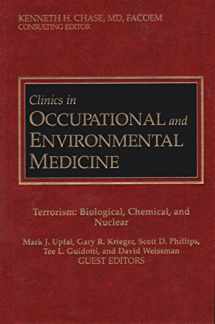
Terrorism: Biological, Chemical and Nuclear
Book details
Summary
Description
This edition of Clinics in Occupational and Environmental Medicine is a critically important examination of terrorism preparedness and response. Among the expert contributors is the current U.S. Surgeon General, Dr. Richard Carmona. Many recent publications have focused solely on bioterrorism. This issue has a broader focus that encompasses the latest information on biological agents including anthrax, smallpox, biotoxins, Viral Hemorrhagic Fever, Ebola, Plague, Q fever, Venezuelan Equine Encephalitis, and food and water contamination; chemical agents including cyanide gas, cyanogen chloride, nerve agents (tabun, sarin, soman, VX), binary agents, smoke generating agents, vesicants, halogen, ammonia, and phosgene; physical agents including nuclear, explosive and antipersonnel; psychological issues including responses and communication of risk; and planning and preparedness including corporate, hospital, emergency department, communications, and risks to responders. This issue provides vital information for many disciplines. Never has an understanding of these threats to public safety been more important.


We would LOVE it if you could help us and other readers by reviewing the book
Book review



